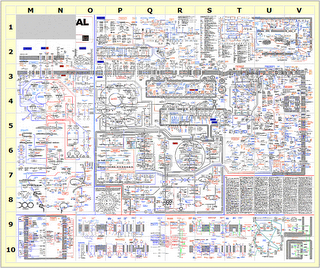 A long, long time ago, scientists were called "natural philosophers" and squatted together with inventors, artists, political activists and other crackpot dreamers at the fringes of society.
A long, long time ago, scientists were called "natural philosophers" and squatted together with inventors, artists, political activists and other crackpot dreamers at the fringes of society.Which is usually a pub.
Where they would drink too much and amuse each other with insider jokes.
Science was cool.
Then came the invention of Industry, and scientists suddenly found themselves rubbing shoulders with businessmen, lawyers and politicians. Gradually, as the scientific enterprise required more and more resources, it drifted away from its underdog roots and became an essential part of the Establishment.
It became a part of The Man.
Which isn't at all cool.
Today Fresh Brainz revisits the roots of the scientific endeavour and digs out the top five reasons why science is still t3h 1337 today!
5. Science can investigate (nearly) anything
From "touchy-feely" subjects like love, to "don't touch with a forty-foot pole" subjects like cannibalism, science can be used to study them all. Take for example this McGill University study of human sexual arousal, where scientists aim thermal cameras at the genitals of volunteers to find out which gender gets horny faster.
Why? Why? How can anyone get paid for doing that sort of research? More importantly, why am I not doing that sort of research?
You can study nearly anything, as long as you can formulate a clear hypothesis. And it can't be unethical or illegal, of course. Although science only deals with Nature, it is not limited by what people believe is natural. Not that long ago, such ethereal phenomena as the movement of the planets, the tempestuous weather and the workings of the human mind were considered supernatural.
Today we have natural explanations for all of these. And the truth turns out to be even more awe-inspiring and bizarre than the original supernatural postulates.
4. It works
Anyone can dream up any explanation for anything. But no matter how simple and aesthetically pleasing your pet hypothesis is, Mother Nature is the boss. Your idea must be supported by evidence from Nature, be it direct observations (such as astronomy) or experimental results (such as molecular biology).
Science-fans often quote Ockham's Razor: the simplest solution is usually the best one. Scientists, on the other hand, know that the best solution is often neither simple nor elegant.
Not convinced? Here is a chart of the molecular processes in a cell:

The best solution is the one that fits the data best, no matter how painful it is to study or look at. If your hypothesis is not supported by data, no amount of mental gymnastics or appeal to personal "feelings" can save it.
3. It's reliable
About a week ago, there was an article in a local newspaper about a number of people who won the lottery because they obtained a winning number from an altar of the Tua Pek Kong(Chinese = 大伯公) deity. Since then more devotees have gone to that altar to pray for "true" numbers (真字).
I have no doubt in my mind that one of these devotees will win the lottery one day.
But when? Who will it be? And how many people will go home empty-handed?
Unlike lottery results, the validity of scientific findings cannot be based on a few chance hits. Experimental results must be repeatable by other groups. Similar results must be obtained many times, using different approaches and techniques. Your confidence in your pet hypothesis should only grow after you have robust evidence to support it, not before.
To ensure the reliability of their results, scientists must also perform experiments that control for alternative explanations. They must be careful not to be misled by experimental biases, placebo effects and random effects.
In contrast, this notion of reliability is missing (or explained away by playing word games) in the pseudosciences such as astrology, geomancy and numerology. This is one major reason why these subjects are not considered part of real science.
2. It's self-correcting
Like any other human activity, science has its own share of quacks. However, the scientific community has a self-correcting mechanism to limit the impact of shoddy research or deliberate fraud.
First, when a scientific manuscript is submitted for publication, it has to go through a peer-review process, where errors and omissions are usually detected.
Next, after the paper is published, other research groups will try to replicate the results. If nobody can repeat these findings, then the community will not consider the results trustworthy. There are many instances of supposed scientific breakthroughs that are caught at this stage.
On top of this, in my opinion, the scientific culture itself is the best safeguard against errors and cheating. Since scientific facts are not immortal truths and must be revised when better evidence comes in, these facts tend to become more and more accurate over time.
1. It knows its own shortcomings
Now for the Number One reason why science is t3h h4xx0rz - it is aware that it doesn't know everything.
In many medieval world maps, uncharted territories are often embellished with drawings of mythical creatures such as dragons and hydras.
Later, the term "terra incognito" (English = unknown land) is used to mark unexplored areas. This may appear to be an tiny change, but it represents a huge leap in the maturity of human thought.
For the first time, people became aware that there can be terra that is incognito. They realized that there are limitations to human abilities, perception and understanding. Instead of relying on vague, cosmic-scale myths that seek to explain everything at once, they started to examine Nature more carefully, one small piece of the puzzle at a time.
Thus, science is like a tall building that is made of bricks. Although each brick is tiny, it is quite strong because it is made using a reliable method.
Brick-by-brick the building grows. With each completed floor, the bricks are improved and strengthened. Building techniques become better refined in order to reach greater and greater heights. The role that each brick plays becomes clearer as the building begins to take shape. Whole floors can become readjusted.
How high will the building go? What will be its final shape? The scientific endeavour thrives on mystery and knows that there is always room for improvement.
One baby step at a time, scientists created a tool for humanity to reach the sky.
However, even today there are many people who sneer at this ugly patchwork tool, because they think that something that is always incomplete does not satisfy their need to have an quick explanation for everything.
They believe that they can reach the sky in one magical leap. So they'll sit on the ground and hurl abuse at the stoopid builders until that day comes.
Ok, that's cool, if it ever happens.
I won't bet on it though.
In the meantime I'll be up here guzzling beer and making me own shiny new brick, sUx0rZ.






1 Comment:
Happy C&C Day!
Post a Comment